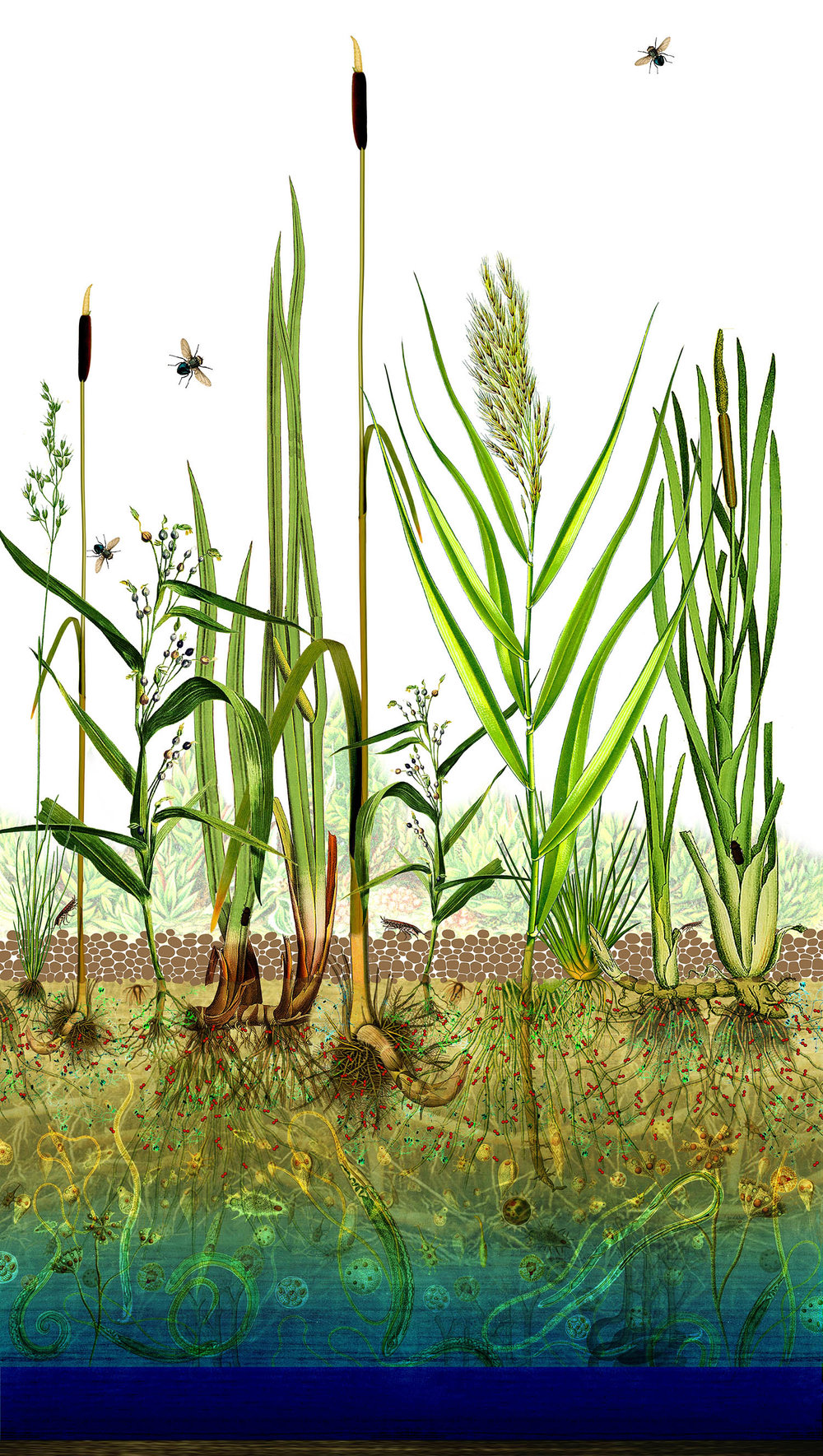wHAT ARE CONSTRUCTED WETLANDS?
Constructed Wetlands are natural water purification systems.
A constructed wetland is essentially, a shallow basin filled with a substrate, usually sand and gravel, and planted with vegetation tolerant of saturated conditions. Waste water is introduced into the basin and flows through the substrate, during which the wastewater will come into contact with a network of aerobic, anoxic and anaerobic zones, which via a series of processes can effectively remove the organic pollutants from the wastewater.
The climate and ecological conditions influence the surface of wetlands needed per person, its efficiency, the retention time and flow rate. Important factors are the substrate and plant species best matched to the hydrology of the wetland.
The warm climate in Brazil is especially favourable for the processes in constructed wetlands. The cleaning process is exhilarated and the size of wetland can be reduced compared with colder climates. It is estimated that ca. 2m2 of wetland are need per person.
Constructed Wetlands produce clean water and rich vegetation. The ways they are used may adapt to the social, economic and cultural conditions in neighbourhoods. Constructed Wetlands may be implemented in a way that serves primary and pressing needs for clean water solely, but may also respond to practices that relate to the values and norms of communities and traditions that sustain these.
They may remind people of how it was to swim in the river, to gather in beautiful public spaces or nurture an own garden. It this responsiveness that enhances the acceptance of such vital systems and that requires attention in collaborative design processes.
A constructed wetland integrated with a house as part of the Água Carioca system
Local plants used in the wetland of the Água Carioca pilot
Creating the constructed wetland at the Sitio Burle Marx pilot


